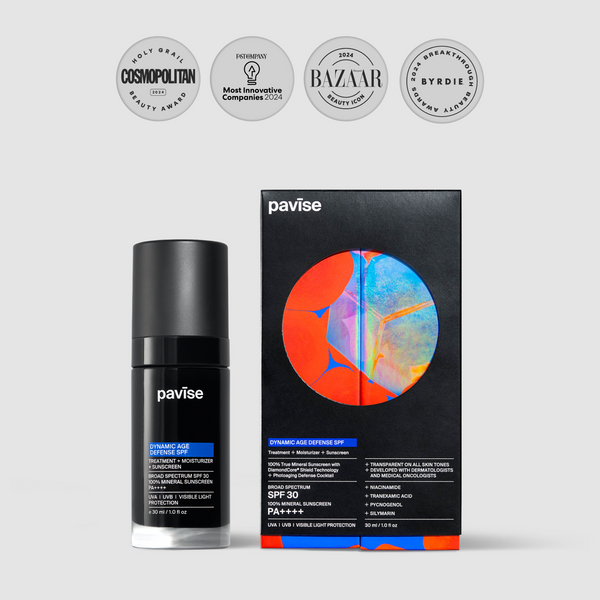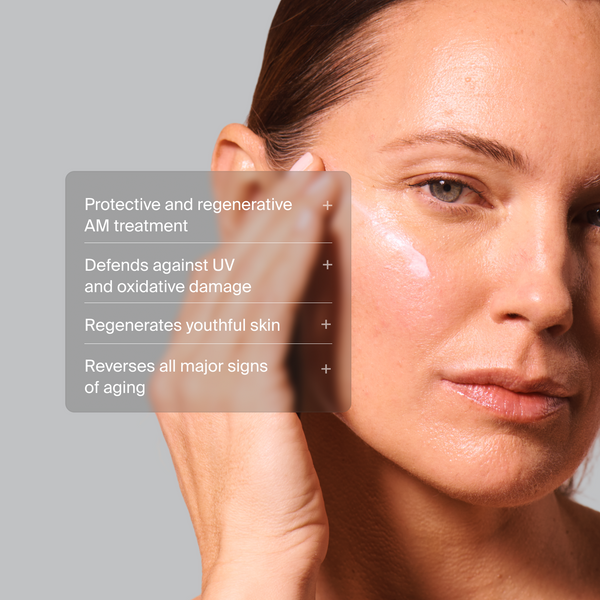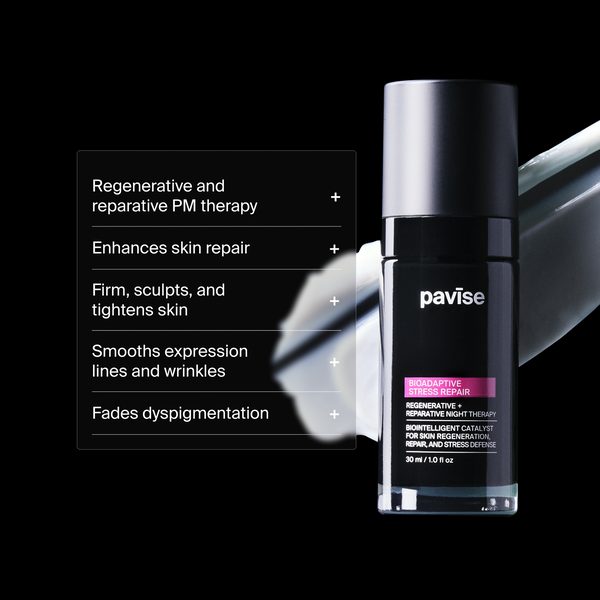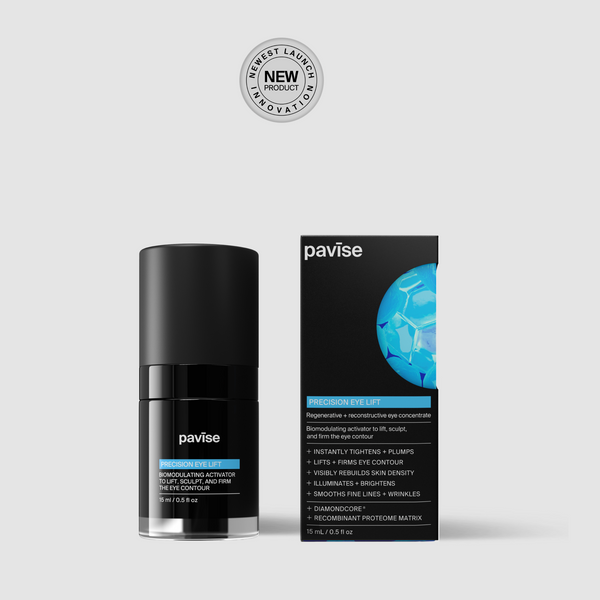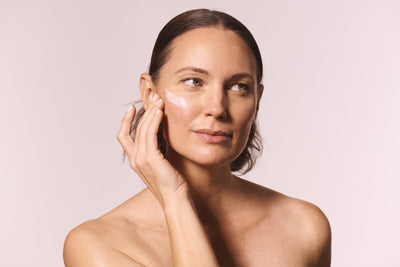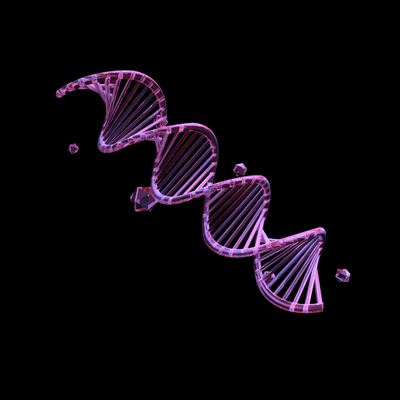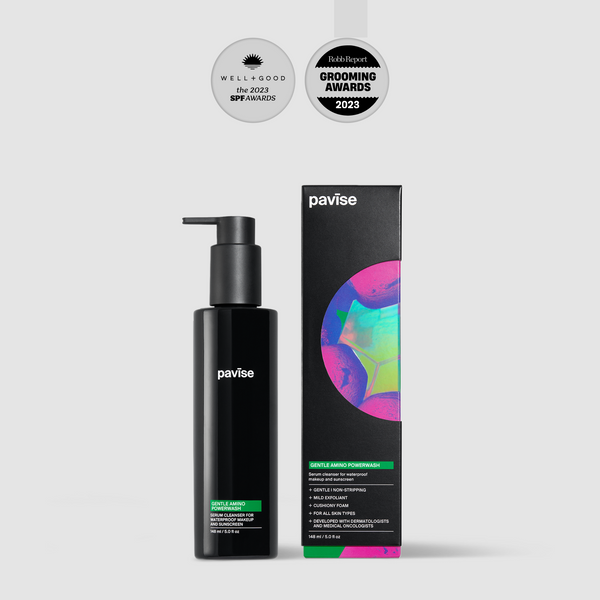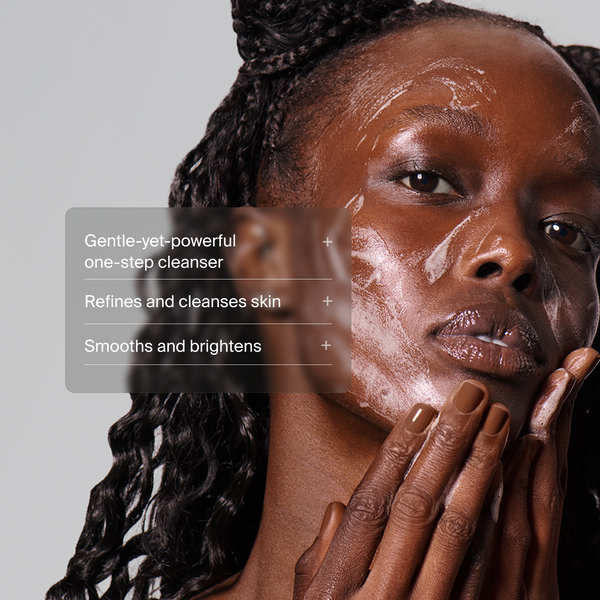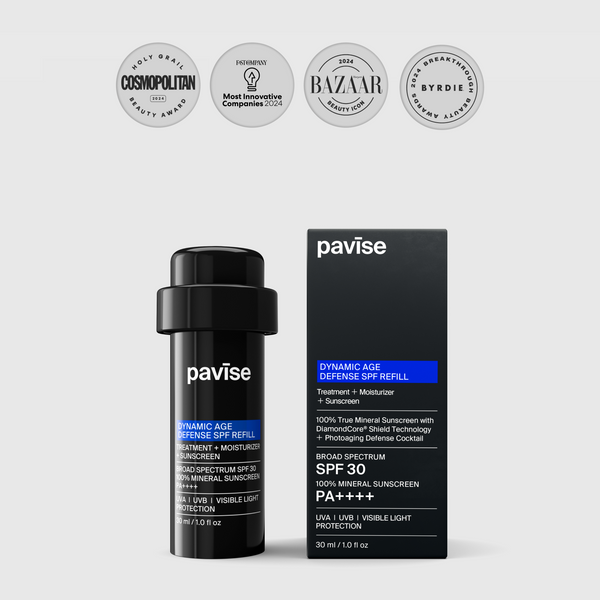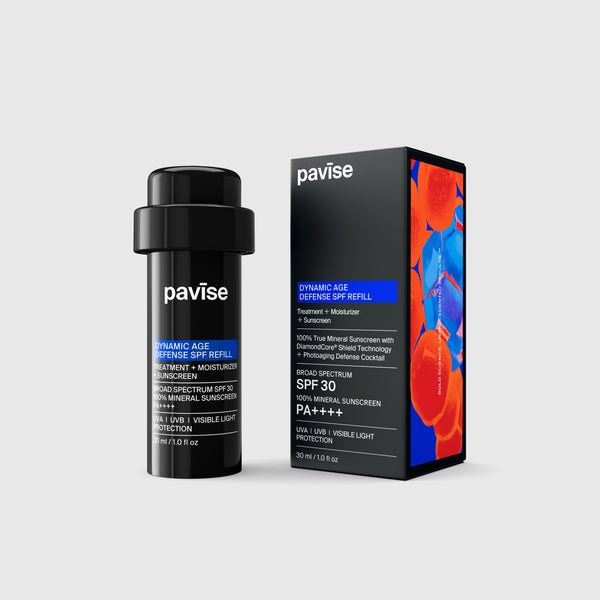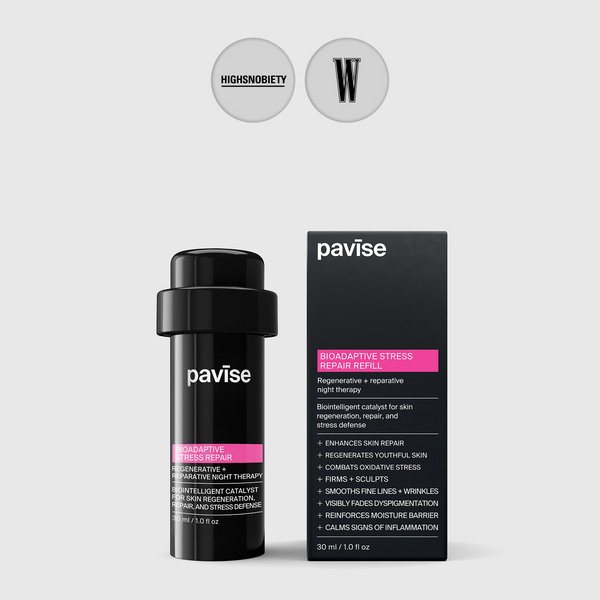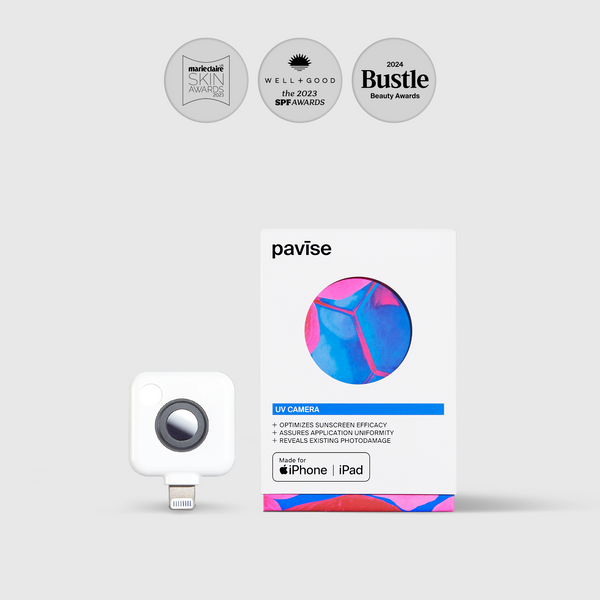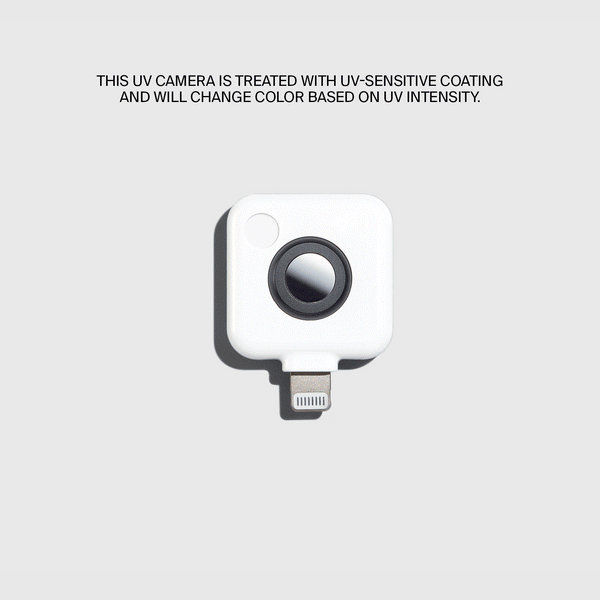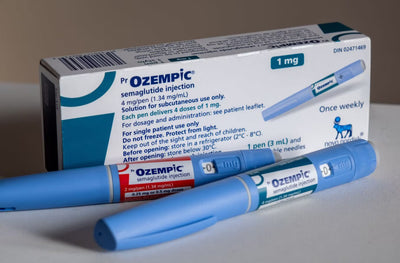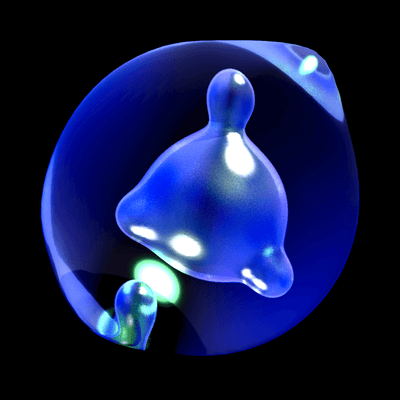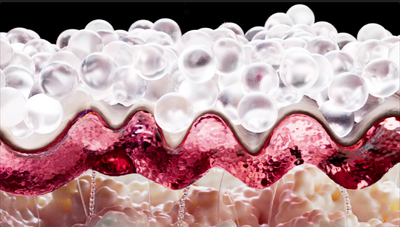TYPES OF UV RADIATION: HOW EACH ONE IMPACTS YOUR SKIN
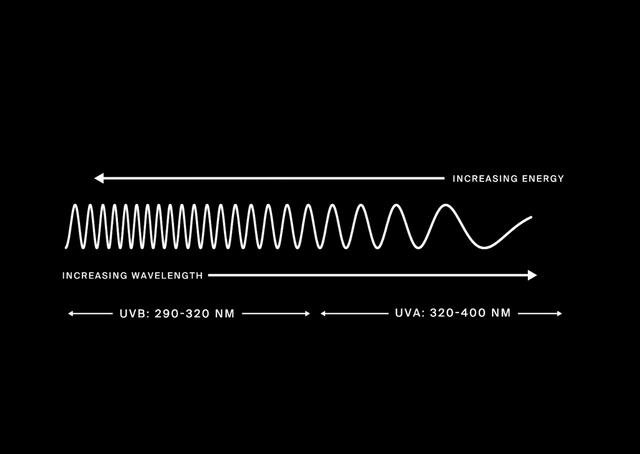
What you need to know
UVA is associated with aging (collagen breakdown, wrinkles, hyperpigmentation), UVB is associated with burning and skin cancers.
Both can cause significant harm to skin and you should find a broad spectrum sunscreen to apply daily.
UVA, UVB, blue light - when people talk about UV radiation, what do they mean? How do UV rays really impact your skin, and is it worth paying attention to?
Every day, your skin encounters environmental stressors that degrade skin quality and health. UV radiation is the most impactful of these stressors, influencing everything from skin texture, hyperpigmentation, wrinkles, to likelihood of skin cancer. Not all UV rays are created equal, and it’s important to understand how they each impact skin health.
The 3 UV ray types
UV Radiation is a form of electromagnetic radiation that exists in the spectrum of invisible light (vs. visible light, or ROYGBIV). This is why it’s inaccurate to judge the “strength” of UV radiation (and consequently whether or not you should apply sunscreen) by the amount of visible sunlight you see. Visible sunlight and invisible UV rays are completely different, and UV rays penetrate clouds even when you don’t actually see any sun.5 The amount of energy that different types of UV rays have can be measured via wavelength in nanometers. The longer the wavelength, the lower the energy.
- UVA: 320-400 nm, UV ray with the lowest energy3
- UVA is unique in the sense that it is further categorized into two subsets:
- UVAI: 340-400 nm
- UVAII: 320-340 nm
- Way to remember UVA: A for aging
- UVA makes up 95% of the UV rays in our environment.
- UVA rays penetrate the deepest into the skin and can also penetrate through glass, making protection against UVA particularly important even when indoors.
- They are responsible in large part for long-term sun damage, sun damage that may not immediately appear, but becomes more apparent as you age.
- UVA is linked to ROS (reactive oxygen species: a type of free radical, or unstable molecule containing oxygen, that reacts easily with DNA, RNA, and proteins, causing damage) activity, which causes hyperpigmentation, skin degradation, and aging.
- This can appear as tanning, sun spots, melasma, darkened acne scars, dark spots.
- This can also appear as fine lines and wrinkles, collagen degradation, skin sagging, uneven skin tone and texture.
- UVB: 290-320 nm2
- Way to remember UVB: B for burning
- UVB makes up 5% of the UV rays in our environment
- UVB rays penetrate into the epidermis, or the top-most layers of the skin, and can’t penetrate through glass.
- They are responsible for more short-term sun damage that is immediately visible in the top-most layers of the skin.
- This often appears as the skin turning red (for lighter skin tones), darker brown or purple (for darker skin tones) after sun exposure.
- This can also appear as changes in skin texture (blistering, cracking, flaking, dryness, roughness, bumpiness).
- UVB can even affect your eyesight and cause dehydration, headaches, and/or heat stroke.
- UVB is higher frequency, or a higher energy, than UVA. Because of this, UVB is more closely associated with severe, long-term harm to skin cells’ DNA and is the leading cause of common skin cancers.
- Studies have shown that 1 in 5 Americans will develop skin cancer by age 70.4
- UVC: 200-290nm
- UVC emitted by the sun can’t pass through the atmosphere’s ozone layer, and does not contribute to UV damage to skin.
Other forms of light exposure
Other wavelengths of light emitted by the sun but outside of the UV spectrum may also contribute to photoaging, or skin degradation caused by the skin’s interaction with light. These forms of light aren’t as impactful as UV radiation, but they can still contribute, and act synergistically with UVA, to generate ROS.
- High Energy Visible Light (HEVL) / Visible Light (VL): 400-500 nm1
- HEVL refers to a spectrum of visible light that includes Blue Light (450-495 nm) within its spectrum.
- HEVL and Blue Light have more recently been associated with screens (phones, computers), but the majority of HEVL comes from the sun.
- HEVL’s contribution to skin degradation, aging, and hyperpigmentation is less than that of UVA, but should still be kept in mind.
- Infrared Light (IR): 780-1000 nm1
- IR is also known as thermal radiation.
- More research is needed to determine IR’s impact on skin health.
ROS, skin damage, cancer—skincare is healthcare
UVA, UVB, and HEVL are all capable of causing harm to your skin in different ways. UVA and HEVL penetrate glass and into the dermis, or deeper layers of skin, generating ROS that are linked to photoaging, hyperpigmentation, and skin degradation. UVB penetrates into the epidermis, or top layers of skin, and is more closely associated with burning and skin cancer because of its long-term damage to DNA.
To prevent or minimize damage caused by UV exposure, look for broad spectrum sunscreen that protects against both UVA and UVB radiation. Apply sunscreen daily and apply at least ¼ teaspoon.
Protection against UVA, UVB, and HEVL exposure is often framed as skin aging prevention. Sun protection’s effects on aging, however, are not immediately apparent, and the visible signs of aging that appear later are just a symptom of underlying cell damage.2
Remember these 3 things:
- Sunscreen is not like your favorite dark spot corrector! Besides not burning, you may not notice visible, immediate “results” from daily application. Just because the underlying damage isn’t visible now doesn’t mean it won’t be visible later, and it will reveal itself.
- The cosmetic symptoms of photodamage like hyperpigmentation, collagen breakdown, and changes to skin texture are signs of underlying cell and DNA damage to skin cells. We’ll repeat it once again—1 in 5 Americans is diagnosed with skin cancer before age 70.4
- Sunscreen and sun protection are vital to skin health. Skincare is healthcare.
References:
- Coats, Jahnna G., et al. “Blue Light Protection, Part I—Effects of Blue Light on the Skin.” Journal of Cosmetic Dermatology, vol. 20, no. 3, 2020, pp. 714–717., https://doi.org/10.1111/jocd.13837.
- D’Orazio, John. “UV Radiation and the Skin.” National Institutes of Health, National Institutes of Health, 20 June 2023, https://www.ncbi.nlm.nih.gov/pmc/articles/PMC3709783/.
- J, L. “The Effects of UVA-I (340-400 Nm), UVA-II (320-340 Nm) and UVA-I+II on the Photoisomerization of Urocanic Acid in Vivo - PubMed.” National Institutes of Health, National Institutes of Health, https://pubmed.ncbi.nlm.nih.gov/9337619/. Accessed 6 Mar. 2023.
- Stern, Robert. “Prevalence of a History of Skin Cancer in 2007.” JAMA, JAMA, 1 Mar. 2010, https://jamanetwork.com/journals/jamadermatology/fullarticle/209761.
- Venosa, Ali. “5 Sneaky Ways You’re Being Exposed to the Sun’s UV Rays.” The Skin Cancer Foundation, The Skin Cancer Foundation, 30 June 2022, https://www.skincancer.org/blog/sneaky-ways-youre-being-exposed-to-the-suns-uv-rays/.
By Claudia Teng - Updated January 31, 2023
